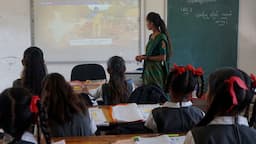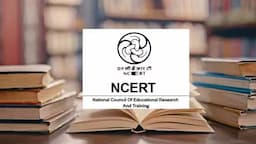Mr. Rakshit has been with the Hero Motocorp ltd for over 5 years, and holds over 25 years of corporate experience. He has worked with L&T, Godrej, and many other reputed multinational companies. He shares his insights with us for India Inc.
What are the top 3 practices that personnel managers must follow in view of the globalised corporate work culture that is driven by digitisation?
Global business environment is continuously shifting and particularly after the disruption caused by pandemic, paradigm shift has happened. This disruption was not anticipated and no one was ready. We realised that nothing is static; everything is in the fluid stage so to say. So, it was interesting to see how the organisations are becoming agile and resilient and elevating themselves. The role of HR was earlier to serve the entire organisation or only a group of people or practices. The disruption taught us to create three kinds of things within the organisation.

First, the role of HR is now evolving to see how we can make the entire organisation resilient and agile. Creating a bank of leaders who are very optimistic and they instil hope within the organisation. Most of the board discussions previously dealt with three bottom lines, which hovered around profits and planning. Though sustainability was gaining some momentum, but people part was in backdrop. But now, the ‘people’ factor has come in the forefront, next is planning and third is the profit. When such changes come, the role of HR alters, because things are centred around people.
During the pandemic, it was thought that the impact will be limited to a particular geography, and the lockdown will solve the problems. But slowly, as the situation emerged, the entire corporate scenario changed. Earlier the three spaces which dominated were the source of procurement of resources, the place of manufacturing or processing and the markets that formed the consumer segment. Now, when either or all of these segments was under lock down, it brought new challenges. The task of the HR was to create an agile culture, with people at the centre. Employees cannot be merely seen as individuals, as he brings an entire ecosystem with him. If there is some disturbance in the family ecosystem, then it impacts the work space too. So, these are connected are the HR has a critical role to enable this paradigm shift in the organisations.
How do you drive change in your organisation, and what are the focus areas for such change?
Most of the challenges to change have been because we have not prepared the people who going to be impacted by the change. In my earlier assignment, when there was a significant change in the company because of business acquisition, we communicated all details to the employees to prepare them mentally. I was part of this change management team and realised that if such communication is not done, a lot of rumours start spreading throughout the organisation. People become part of the grapevine and unauthentic information gets transmitted faster.
While working for Tata Steel, there was a major restructuring in the company. The MD at that time, Mr. Irani identified people who were listening pillars in various departments, and started doing many Town Halls. So people were directly informed about how the change will take place and how it will affect them. That is the fundamental of the change process.
I relate it with the Newton’s law of Motion. There is a state of inertia, and when the force is applied, people start resisting it, as they resist change. So the way of working, cultures, values can change only with the participation of people. Although a number of change models and theories are there. At the end of the entire process, people should again be communicated about what the team has gained and what could have been achieved. Also, it is essential to remember that nothing is static. Everything is bound to change. The human mind is programmed to adopt and accept the change. A lot depends on how the organisation is preparing the climate where change is looked at as being positive, rather than negative.
Looking at the scenarios of merger and acquisitions, some cases are very successful while others have turned bitter. The partners have even parted way, because the process of change has not been managed well. So, the company being acquired looks like the vanquished and the one taking it over appears like the vanquisher. We need to see the success story of Cisco. The organisation evolved with the M&A theory, but through the process, it tried to leverage the strengths of each company. That’s how it became a company to have done mergers across the world successfully.
Can industry integration help the higher education sector provide a more holistic learning to students?
The industry integration should have been in place much earlier. If I am not taking the voice of the consumers while making a product, it will not be a very successful one. Educational institutions are nurturing students, who are the finished product for the industry that employs them. As you build linkages, you find that a very necessary co-existing eco system emerges. Your product is like a raw material for the industry. Seeing from this perspective, where industry is the consumer, taking the viewpoints of stakeholders in building the product is extremely important. If the academia and industry work in tandem, it will be beneficial for both.
While doing my Leadership course from Wharton school of management, I realised that most of the professors with whom I was interacting were on the board of directors of the leading companies or were consulting them closely. For instance, one of them was on the board of Google, and he knew where the industry is moving, what the demands are going to be, and what type of products we will need in the future. Such instructors are able to restructure the curriculum in a way that is aligned with the industrial context. It is about analysing what is the organisational fit vs. what I am teaching to students.
In India, it is a sorry state where most of the management or engineering colleges hardly interact with companies. The World Economic Forum report has been stating the future of the jobs across the world. It says that many of the jobs that are present today may not be in existence in the future, or change over the next five years. But the higher academia, despite having knowledge of such reports, continue to follow the same curriculum and teach in same manner.
When a student joins the industry from even the leading management or engineering college, he has to go through almost a year of training. The company invests time and money on making the student industry ready. By shortening this period of getting prepared, the industry, academia and students, everyone is getting benefited.
One experiment that happened in the state of Haryana was the skilled university. It adopted a concept where students are involved in the industry. A new course named Mechatronics has been launched, which combines mechanical, electrical, optics and computer engineering. The students are collaborating with the industry, and working in tandem. The institute’s lab acts as a factory. So, while students are learning the technical skills, they are also getting a grasp on the nuances of the industry. Integration between the industry and academia is, hence, the need of the time. If it’s not done then both will face struggles.
My observation is that the academia has been traditionally very orthodox and conservative in approach. But when the pandemic stuck, the institutes were the first to adopt the online mode of teaching, and leverage the technology. The industry did that gradually and exponentially. Though the academia struggled to function online initially, they showed the way to the entire industry. They broke the mindset that education cannot be provided at a virtual platform.
What are the key factors that guide your selection of new resources?
These depend on what we are looking for during campus placements and what is the differentiating factor. We have to follow the process of developing a person. When you put a certain input repeatedly, if the process of controlled, then the output will also be similar. There are two factors that are becoming critical. The first is the analytical thought process of a student, and the perspective that he has developed. Is he looking from a myopic perspective or has broadened his vision to see the larger problem?
The second factor is that whether the student is problem oriented or solution oriented. For being successful, the person has to be solution oriented. When a problem arises, it can be solved innovatively to bring new solutions and show new ways of working. When the pandemic hit, some people reacted with a reptilian brain, which is a primitive way of thinking. It has three options, fight, freeze or flight. The mammalian brain also tells you to analyse and then take the most appropriate decision. So, we need to understand that when faced with a challenge, what is the mindset of a person; whether a student can analyse and then take action, or he follows the flight, fight or freeze mode.
When the disruption happened, some nations decided to fight, some of them went in the freeze mode, while some others took the flight option. But some countries started analysing what can be done as a long-term solution, since the lockdown is only a temporary solution. They looked at a situation going beyond, when the pandemic is going to subside. They thought about how we are going to augment our economy and leverage our technology. Since some vaccination and other such solutions will be needed, they looked at whether the health sector could provide the same. If they are not able to make, then they will have to purchase the vaccines from other countries who will sell at their own terms and conditions, at their prices.
Some of the visionary leaders were not only able to manage the things differently, so some countries were able to recover quickly. So, it all depends on whether you are able to think beyond the problem and look at solutions. Most of the unicorn companies have been born here in recent past, by young entrepreneurs who have been able to look at innovative solutions. They are creating history and have become the growth engine of Indian economy. When we go to a campus, that is the quality that we are looking for.
One change that we are seeing over some time is that more youngsters are looking at becoming entrepreneurs. They want to gain industrial experience for a short time.
You have written on a number of topics, including agriculture, economy, coaching, etc. How do you expand your area of interest and gain in-depth knowledge?
When you are done with your formal studies, you have just started gaining knowledge. When you start having experiences and putting the experience in context, then many interesting aspects come up. We may even feel that whatever was taught to us has no meaning. When we can combine the theoretical knowledge with the practical experiences, then we evolve and grow. The great leaders have been able to do so.
My interest lies in observing people, and I learn by doing so. I see people traveling and reading books. Making observations and assumptions, about the behaviour people are showing and thoughts they express, is a great source of learning.
After the protests by farmers started, I read about what real actions have been taken to improve the farm laws, and bring about changes. After the Green movement, there has been a gap of 50 years. Now, the real farmer gets the price of 5 rs, but the market price becomes 50 rs. We need to understand how this gap of 45 rs gets created, and who benefits from this. No one talks about the farm labours. Mostly it is the rich farmers who get benefits, while real farm workers just earn daily wages.
So, it is not always important to see what is being done, but to understand why it is done. This thought process has helped me to gather insights about many domains.
Also, you have worked in diverse industries over the years. Do they face distinct challenges or situations related to talent development and employee relations?
I have worked almost across the country and even outside India. I was there in Malaysia and Bangladesh. I have also supported the work for Latin American and African countries. There are broadly three segments of the entire industrial relations scenario. One is the countries that were part of the British colony and were ruled by Britishers or French. In these places, the industrial policies and laws were similar and employee relations were developed along the same ideas. In African countries, nothing concrete was being done in terms of policies. So, they were in a nascent stage where people were reacting and not responding. The Latin American countries have a fragile economy. It’s akin to the theory of Karl Marx, and with time the policies keep evolving. I have seen violent employee reactions, as well as subordinative ones.
So, the idea that I have developed is influenced by different types of situations. In industrial world, employee relations are segregated as harmonious and collaborative. According to me, employee relations have to be productive and progressive, because every relation needs to yield something. If it doesn’t yield positively, good relation does not matter. It must give some result. When things are changing, it needs to be seen whether a person is becoming a partner in the growth process or a negotiator. Suppose I want to change some process, but the union demands to know that how it will benefit them. Then it is not a progressive relation, as they are not collaborating at a time when the management needs them to. But if they are ready to change and adopt the new methods, then it is a collaborative journey. It is not a very stable relationship though, if it is based on some give and take, and providing benefits. In that case, as soon as you withdraw the benefits, the relation will be hampered and collaboration will not work. So, it is somewhat fragile in nature.
With respect to talent development, the goals and targets of the company must be very clear. The entire organisational talent can be arranged into 9 boxes, which determine the Potential Performance Metrics. Arranging in such a way, we have to see what the talent inventory looks like. Each and every person has a different requirement, so the talent program has to be designed in a personalised way. Suppose a person is a ‘high potential – high performer’, then he will not be having monetary impetus. He will be looking for growth and different challenges in the work space, to show his potential. They must be put in such programs that are satisfying for them, and they find it worth their time and efforts. They will also be creating something of value for the organisation. For a person whose potential is high but the performance is medium, it must be found that what is inhibiting him. He may be motivated to enhance the productivity with job rotation, executive training, or cross functional exposure. I believe that when you hire, keep in mind his future potential. Otherwise, that person will become a liability on the company. Most of the time we fall into that trap because our requirement is for today, so we do not have that long term perspective.
How important is it for students to be skilled in more than one area, and also to keep upgrading their skills?

Multi skilling and multitasking is not only important for students but for each and everyone. It’s not necessary to be the master of every skill, but at least one can try and start learning the extra skills. When we learn a particular skill, we can understand the mindset of the people who are doing that work. Sometimes, a skill may seem to be trivial, but nevertheless, one must learn it. You never know when it may become useful to you or may even be a life saver.
Even in the organisational context, gone are the days when one could be a specialist. Now generalists are in demand, who are able to come up with innovative solutions, and give inputs in various domains.
This is a time for digital integration, and the academia also needs to benefit from such integration. The best of Indian education system should partner with the global education system, and integrate for benefit of students.






.jpg&w=256&q=75)










